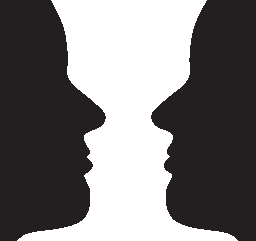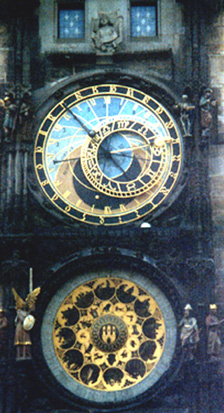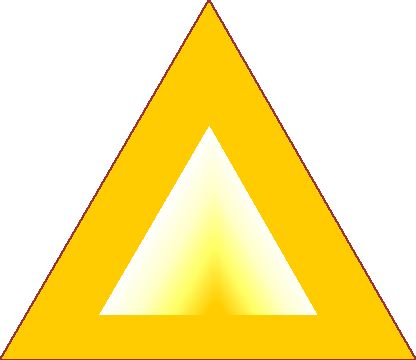“Technology, in one sense, is the way in which we organize ourselves . . .”
Organizing the world through applied science or technology:
“Technology, in one sense, is the way in which we organize ourselves . . .”
| Step Right Up | 
|
Pursell, Chapter 3: |
| How does technology influence our behavior, in comparison to how it affects the lives of you or the people you have interviewed? | ||

|
"It was a mark of the modern, . . .to divide things into identical units which could be both sequenced and quantified." |
|
| led to a different understanding and use of people and things." | p. 66 |
|
Clocks | Time | Devices | Origins | Connections | Summary
Time pieces
1800, analog clocks two beats per
second
2000, 100,000 BPS
![]()
1410, The Prague town center clock tower
1506-1510, Codex Leicester by Leonardo da Vinci; his 72 page, sketch and notebook
1590, Dome of St. Peter's Basilica in Vatican City finished.
1666, The fire of London destroys the old city.
1699, Human and horse labor was compared
1872, Erewhon written by Samuel Butler; published anonymously in 1872, on the theme of utopia.
1883, American Railways created standard time
1949, Timex™ wristwatch (analog watch face)
1993, pocket GPS -- or Geographical Positioning System (a complicated technological
complex of digital, not analog components).
| Clocks | ||
|---|---|---|

|
||
| Prague clock, 1410 | ||

|
||
| Ideological responses | Social & Organizational responses | |
The three facets, aspects, or dimensions of technological influences on historical change are shown with respect to the spread of clocks.
See the automata move: Prague Clock tower: (start at 1:18 - You Tube)
Compare the above dates to these events in the advances in measurement and technology
1410 October 9, first recorded commentary on the Prague clock tower.
1680s – 1780s
The Enlightenment: the period after Isaac Newton's, Robert Hooke's & Rene Descartes' inventions: Prism, Microscope, Analytic Geometry
1785 uniform land measuring system in the US
1852 the industrial lift patented by Otis
1859 hand made boots -- photographs of pedestrians --
1878 Edward Muybridge’s photographs of horse race-- faster-speed photography.
1882 “the decomposition of motion into time" (sequences)
1895 mechanically produced boots (mass production by machinery)
1896 the escalator at Coney Island amusement park in NYC, moving side-walk.
1990 automated mapping of nucleic acid base sequences for the human genomeSteps in the standardization, sequencing, uniformity, and repeatability of implements, ideas and institutions.
Clocks | Time | Devices | Origins | Connections | Summary
Pursell, Chapter 3: Step right up
p. 66.
Time is the passage, of an agreed upon duration, that is signaled or sensed by two or more different observers. (Siry, 2005)
“Our experience of time, for example, has changed vastly over the millennia."
p. 66.
"Although time was seen as flowing endlessly, the best way to trace that flow was to break it into identical bits which could be counted."
p. 67.
Is time uniform?
Take for example the time the moon loses amounting to 50 to 20 minutes late every night except in Alaska where it rises a minute earlier every day.
Time as a concept partially defined by technological changes in precision iron instruments or fine technology:
This new clock was made of three distinct but connected parts: weights ...provided the power for the device, a gear train that could transmit the energy..., and a measuring mechanism which marked the passing of time, (drawn here).
"It was this last component that was the most powerful breakthrough in clock design."
"Thus the rocking escape mechanism that alternately allowed and prevented the flow of energy from the weights turning a wheel, provided a near perfect device for dividing time into beats." (demonstrated here above to the left)
Such instruments allowed machinery to mimic the measures of a planets' motions, regularize duration, and standardize observations largely because the clocks are made of precision, moving parts that have a recognizably sequenced, divided, and specific pattern of relationship among the divergent components that when acting together accurately mark and thus account for elapsed time.
Clocks | Time | Devices | Origins | Connections | Summary
The earliest astronomical devices to mimic the movement of the sun and the moon in the heavens come from ancient China:
Ancient (Han) China: sundials, compasses, glass, silk, porcelain & paper! (see here.)
Sung Dynasty China: water clocks & escapement.
Diagram of an escapement mechanism (above).
Medieval Europe water clocks and sundials, were more imprecise.From China to Baghdad The capital of the Islamic world and present-day Iraq, Baghdad was an intellectual center where scholarship flourished in architecture, literature, mathematics, astronomy, medicine, chemistry, zoology, and geography.
Europe:
Renaissance spring loaded clocks, weight driven, & pendulum clocks
fine technology as represented in drive vs. feedback mechanisms.
Clocks | Time | Devices | Origins | Connections | Summary
Social and Cultural (ideological) influences of time keeping & precision chronometers
"...the transformation was profound."
"it was this possibility of widespread private use that laid the basis for time discipline, as against time obedience."
"One can … use public clocks to summon people for one purpose or another; but that is not punctuality. Punctuality comes from within, not from without."
So do certain widely used tools reorganize our lives to such an extent that our behavior is altered and we pass that social value on to our descendents?
"So deeply did this sense of being a 'timely' people penetrate the European consciousness,..."
p. 69.
" Something of the ideology of clocks can be understood by comparing these with another critical technology, that of feedback mechanisms which monitor and adjust the actions of other devices."
Clocks are a transformational, fine technology that journalist and history buff James Burke (for the BBC) calls triggers of change.
Clocks not only triggered or jump started a change in Europe, but the mechanization of time pieces had far reaching effects from the motion of heavy machinery, to the rationalization of shift-work, to the standardization of time zones.
Clocks had a pervasive influence because they are the material basis of countless other inventions that require precise timing for the operation to be performed, such as automated looms for weaving, or steam engine design, measuring electrical current, or the firing of spark plugs in an internal combustion engine.
( Pursell, pp. 67-72.)
From an ideo-technic (Pursell. pp. 32-33.), or abstract and ideological level of cultural symbolism, a French Bishop, Nicole Oresme, soon after the incorporation of the clock into Roman rite churches (western Europe) and their ban in Eastern Orthodox churches, suggested that God could be thought of as a clock maker. (Pacey, Postman, & Pursell all agree)
God the creator as depicted on St. Peter's dome (1503-1590) in Rome.
Oresme -- so impressed by clocks keeping accurate time, insisted that the creation was the clock of the heavens and the earth over which the deity presided through the idea of its inherent mechanism that God had made.
Clocks | Time | Devices | Origins | Connections | Summary
Nicole Oresme was a philosopher, economist, mathematician, and physicist, one of the principal founders of modern science; b. in Normandy, in the Diocese of Bayeux; d. at Lisieux, 11 July, 1382. In 1348 he was a student of theology in Paris; in 1356 grand master of the Collège de Navarre; in 1362, already master of theology, canon of Rouen; dean of the chapter, 28 March, 1364.
On 3 August, 1377, he became Bishop of Lisieux.
Note on Erewhon, or "No where" somewhat spelled backwards:
This is a take off on Utopia, in greek meaning U, meaning no, or not and topos meaning place; hence not a place.
There were no machines in this fabled land of Samuel Butlers because the inhabitants feared the power of the machinery.
"increased accuracy" -- "was a great industry desideratum"
"The division of time into smaller and smaller segments."
p. 71
Any related set of tools, devices, instruments, and dependent systems should be thought of as a tool complex and if a society is dependent to an extreme degree on a tool complex the associated systems and materials flow may be said to be a web of technology.
Clocks | Time | Devices | Origins | Connections | Summary
A trigger, or technical triggers that launch a process of related inventions, to which new techniques must be adapted and applied if the inventions at the heart of a tool complex are ever to be exapted in new and different ways to meet emergent needs.
There can be no exaptation without adaptive behavioral changes: for example a differential gear --first used in Greek, Antikithera device-- was used in clocks, automated spinning and weaving machinery and now resides in the rear of trucks and automobiles.
For another example of exaptation in the assembly production of automobiles see Pursell Chapter 4 on Fordism.
It takes the context of a culture–that is the existing organization of any society's laborers, and the imagination of its tool users–to adapt and then adapt again to the same material when technology is crafted and shaped into very different tool complexes where new techniques are applied to use the same materials for these altogether divergent purposes or distinct ends.
Therefore: For God to be understood as a divine watchmaker and "his universe" imagined as a clock-work mechanism, the transformation of the astronomical clock into the paragon of European public chronometers depended on instrumentation improvement such that precision and miniaturization brought about widespread familiarity with clocks and watches.
Pacey's dimensions | definition | Core ideas | Pursell, Out of the Loop | Pursell Contents
Tools of Toil: what to read. Tools are historical building blocks of technology. Postman–Tech | Postman–Television | Pursell | Pacey–Meaning | Pacey | Head | Tenner | Eberhart | Snow | Kaku